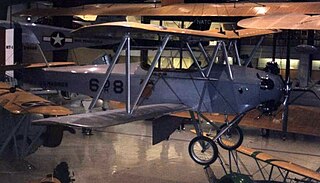Related Research Articles

The ERCO Ercoupe is an American low-wing monoplane aircraft that was first flown in 1937. It was originally manufactured by the Engineering and Research Corporation (ERCO) shortly before World War II; several other manufacturers continued its production after the war. The final model, the Mooney M-10, first flew in 1968 and the last model year was 1970. It was designed to be the safest fixed-wing aircraft that aerospace engineering could provide at the time, and the type continues to enjoy a faithful following.
The Acme Aircraft Corporation was an American aircraft manufacturer based in Rockford, Illinois, founded in 1928.
The Acme Sportsman was a two-seat parasol wing sportsplane built in the United States in 1928 by Acme Aircraft Corporation, a company from Rockford, Illinois. It was of conventional taildragger configuration with open cockpits in tandem and folding wings. It was designed by Edward Stalker of the University of Michigan.

The Adcox Student Prince was a two-seat open-cockpit biplane designed by Basil Smith and built by the students of the US Adcox Aviation Trade School in 1929. It was based on the one-off Adcox Special, and the first example flew on 17 September.
The SJ-1 Head Skinner was a single-seat, gull-wing sports plane built in the US by brothers Earl and Jerry Adkisson of Tuscola, Illinois in 1957.
The White Wing was an early US aircraft designed by Frederick W. Baldwin and built by the Aerial Experiment Association in 1908. Unusual for aircraft of its day, it featured a wheeled undercarriage. The wings were equipped with ailerons controlled by a harness worn around the pilot's body; leaning in one direction would cause the aircraft to bank to follow. The ailerons led to a legal dispute with the Wright brothers over the brothers' patent on movable wing surfaces.

The Rutan Model 40 Defiant is a four-seat, twin-engine homebuilt aircraft with the engines in a push-pull configuration. It was designed by aerospace engineer Burt Rutan for the Rutan Aircraft Factory.

The Naval Aircraft Factory XN5N was a prototype United States monoplane trainer aircraft produced by the Naval Aircraft Factory in Philadelphia, Pennsylvania in 1941. A single prototype was built and evaluated.

A twin-boom aircraft has two longitudinal auxiliary booms. These may contain ancillary items such as fuel tanks and/or provide a supporting structure for other items. Typically, twin tailbooms support the tail surfaces, although on some types such as the Rutan Model 72 Grizzly the booms run forward of the wing. The twin-boom configuration is distinct from twin-fuselage designs in that it retains a central fuselage.

A trimotor is a propeller-driven aircraft powered by three internal combustion engines, characteristically one on the nose and one on each wing. A compromise between complexity and safety, such a configuration was typically a result of the limited power of the engines available to the designer. Many trimotors were designed and built in the 1920s and 1930s as the most effective means of maximizing payload.

The Martin T4M was an American torpedo bomber of the 1920s. A development by the Glenn L. Martin Company of their earlier Martin T3M, and, like it a single-engined biplane, the T4M served as the standard torpedo bomber aboard the aircraft carriers of the United States Navy through much of the 1930s.

The New Standard D-29 was a trainer aircraft produced in the US from 1929 to 1930. It was a conventional biplane design with a fuselage constructed from duralumin members riveted and bolted together, and the wings were made with spruce spars and bass-wood and plywood built-up ribs. Deliberately built to be rugged and simple the D-29 was moderately successful, but had to compete with the Swallow TP.
The Waco Model W Aristocraft was an American four-seat monoplane, the last aircraft designed and built by the Waco Aircraft Company. It had an unusual configuration with an engine mounted at the front driving a pusher propeller at the rear.

The Thomas-Morse MB-4 was a prototype American mailplane of the 1920s. It was of unusual design, being a biplane with twin fuselages housing the crew of two and a central nacelle which carried the aircraft's twin engines in a push-pull configuration.
The AeroLites Bearcat is an American amateur-built aircraft, designed and produced by AeroLites, of Welsh, Louisiana and introduced in 1984. The aircraft is supplied as a kit for amateur construction.

The Bach "Super Transport" was a design for a four-engined transport aircraft that was never built.

The Williams-Cangie WC-1 Sundancer is an American homebuilt biplane racing aircraft that was designed by Art Williams and Carl Cangie and built by Ralph Thenhaus in 1974. Plans were at one time available from Williams' company, the Williams Aircraft Design Company of Northridge, California. Only one was built.

The Aero Designs Pulsar is an American two-seat, low wing, ultralight and homebuilt aircraft that was designed by Mark Brown and first produced by Aero Designs of San Antonio, Texas, introduced in 1985. When it was available the Pulsar was supplied as a ready-to-fly aircraft and as a kitplane for amateur construction.

The Emsco B-8 was a two-seat, single-engine, low-wing, twin boom experimental aircraft designed by Charles F. Rocheville in 1930 while he was vice president of Emsco Aircraft Corporation, Long Beach, California.

The Aero Dynamics Sparrow Hawk MK II is an American homebuilt, two seater, single-engine, pusher monoplane, manufactured by Aero Dynamics Limited. It was designed by former Boeing design engineer Charles "Chuck" Herbst.
References
- ↑ "Acme Sierra" . Retrieved 16 November 2010.
- ↑ Eckland, K.O. (2 May 2009). "Aircraft Ab – Ak". aerofiles.com. Archived from the original on 5 December 2012. Retrieved 26 January 2012.